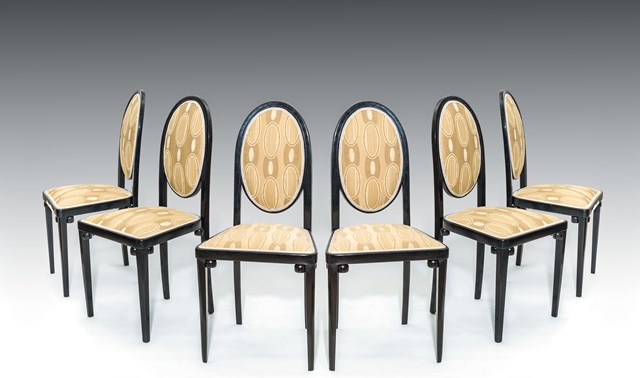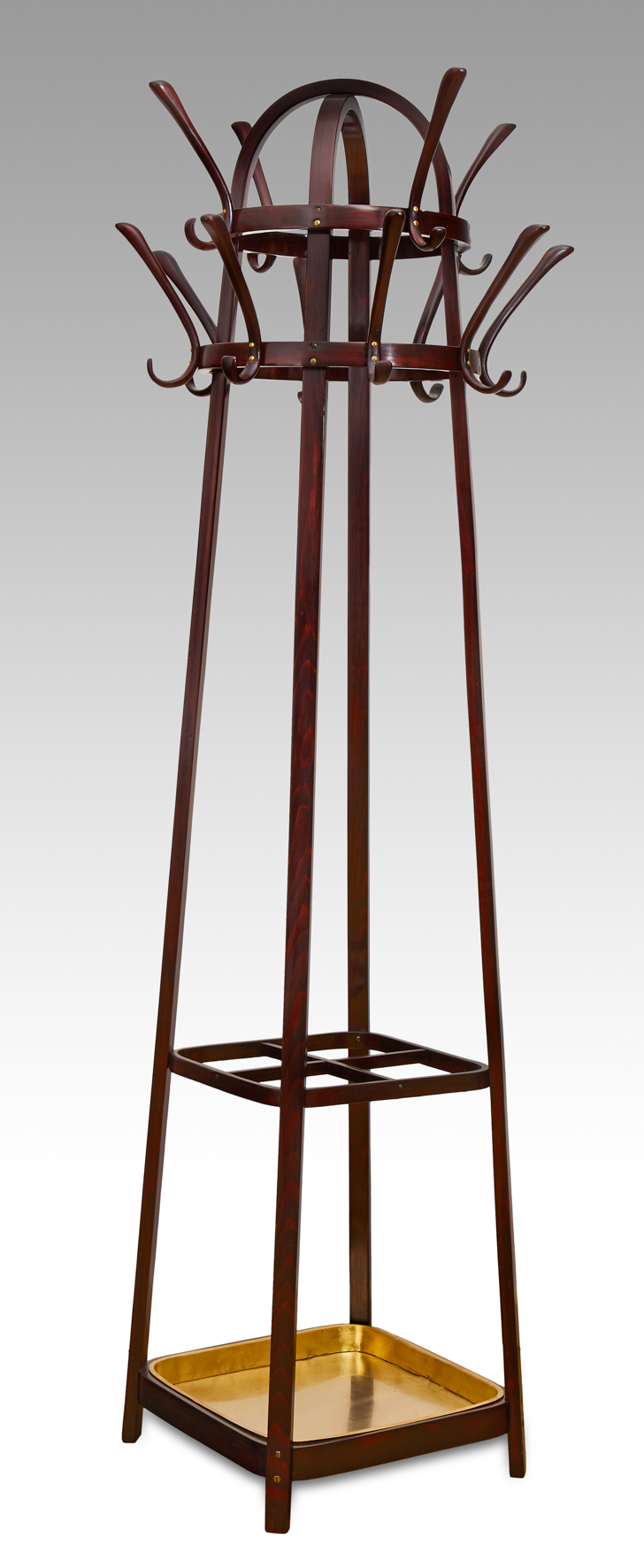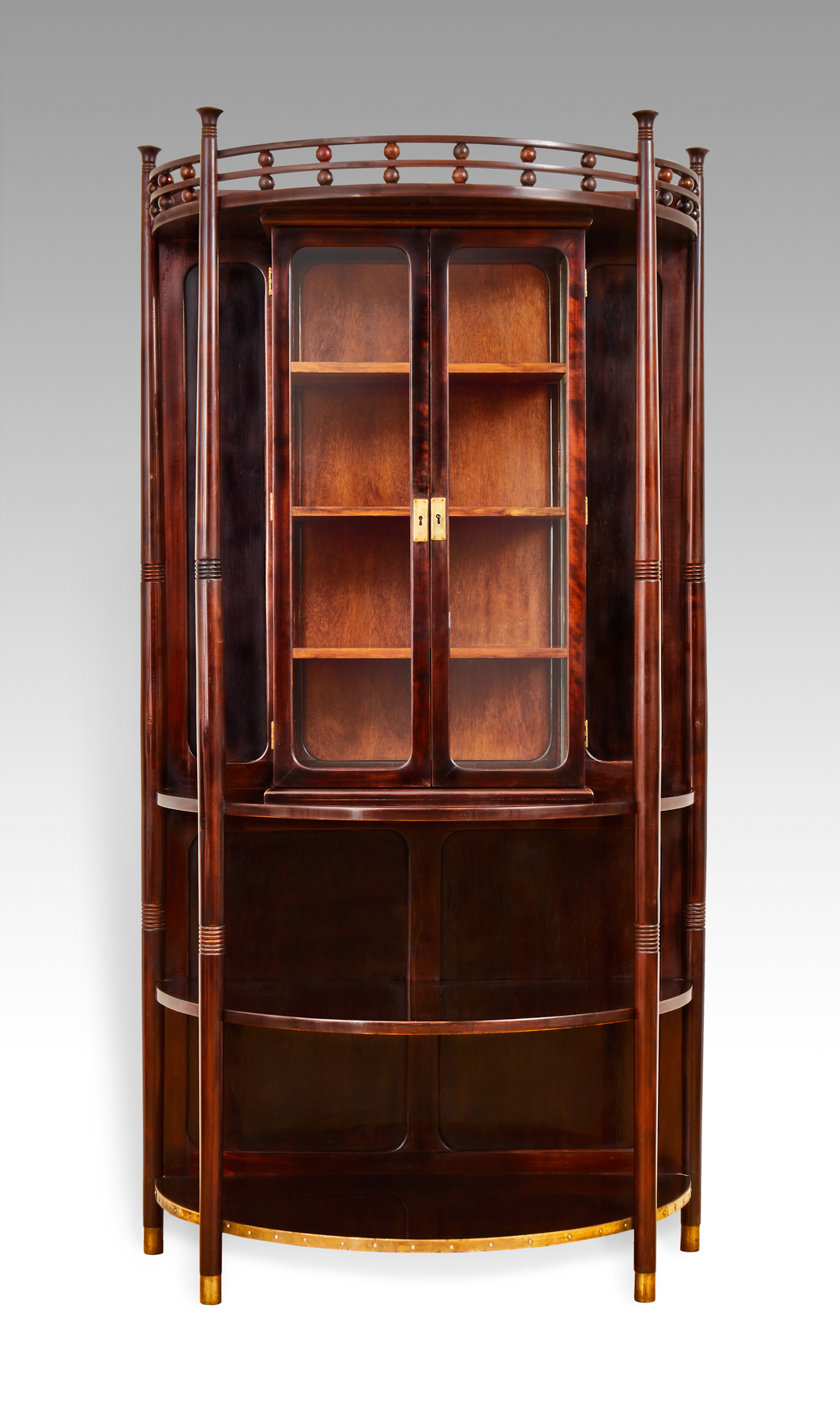In 1849, Jewish entrepreneur Jacob Kohn (1791–1866) and his son Josef (1814–1884) founded a factory for the production of wooden components in Vsetín, Moravia. In 1867, Kohn was granted a privilege to improve the method of bending long timber. Just one year later, in 1868, the factory built in Vsetín began producing bentwood. By 1900, the company employed 6,300 workers, who produced 5,500 pieces of furniture every day.
Although Josef Kohn was guided by the tastes of his more affluent clients, for a long time he did not have any qualified designers for salon furniture. At the 1900 Paris World's Fair, Kohn was able to present models designed by Gustav Siegel (1880–1970), an artistic collaborator of the Wiener Werkstätte and a student of Josef Hoffmann. Gustav Siegel subsequently became chief designer at Kohn and was responsible for most of the designs. From then on, bentwood furniture was no longer an anonymous industrial product for the mass market, but became part of the Arts and Crafts Movement and product design. In 1901, Jacob & Josef Kohn were honoured with the task of designing the Hall of Honour for the Austrian Exhibition in Glasgow.
The company had its own sales outlets in Antwerp, Barcelona, Berlin, Budapest, Hamburg, Cologne, London, Madrid, Marseille, Milan, Moscow, Naples, Nuremberg, Paris, Rome, St. Petersburg and Warsaw, as well as other representatives and agencies in all major commercial centres. Before 1900, the company's products had already won 36 first prizes and honorary diplomas at almost all exhibitions.
In addition to Josef Hoffmann, architects such as Otto Wagner, Adolf Loos, Koloman Moser and Otto Prutscher designed products for Kohn, which were a great success at the Cologne Werkbund Exhibition in 1914.
The collaboration with Josef Hoffmann promoted the reputation and success of the Kohn company. Hoffmann supplied designs such as the ‘Sitzmaschine’ (seating machine) from 1904 and chairs for the Vienna Cabaret Fledermaus in 1907. Hoffmann furnished the Purkersdorf Sanatorium with dining chairs made of laminated beech with circular decorations, which he had made by Jacob & Josef Kohn. For the art exhibition in Vienna in 1908, he designed a small country house complete with interior furnishings on behalf of Kohn. Otto Wagner had the chairs for the dispatch office of the newspaper Die Zeit manufactured by Kohn.
With the help of upholstery fabrics from Backhausen, the artists created seating furniture that was exceptionally valuable for its time. Jacob & Josef Kohn became a leading company in the field of furniture manufacturing and, together with the Wiener Werkstätte, founded a discipline that years later came to be known as ‘industrial design’.
The success and importance of the Kohn company was also underlined by its participation in numerous exhibitions at home and abroad and the awards it received there.
In 1914, J. & J. Kohn merged with Mundus AG (Kohn-Mundus), which in turn was incorporated into the Gebrüder Thonet company in 1922 (Thonet-Kohn-Mundus). The Kohn brand remained in existence until 1937. Furniture by Jacob & Josef Kohn can now be found in museums such as the Museum of Modern Art in New York, the Musée d'Orsay in Paris and the Museum of Applied Arts (MAK) in Vienna.




